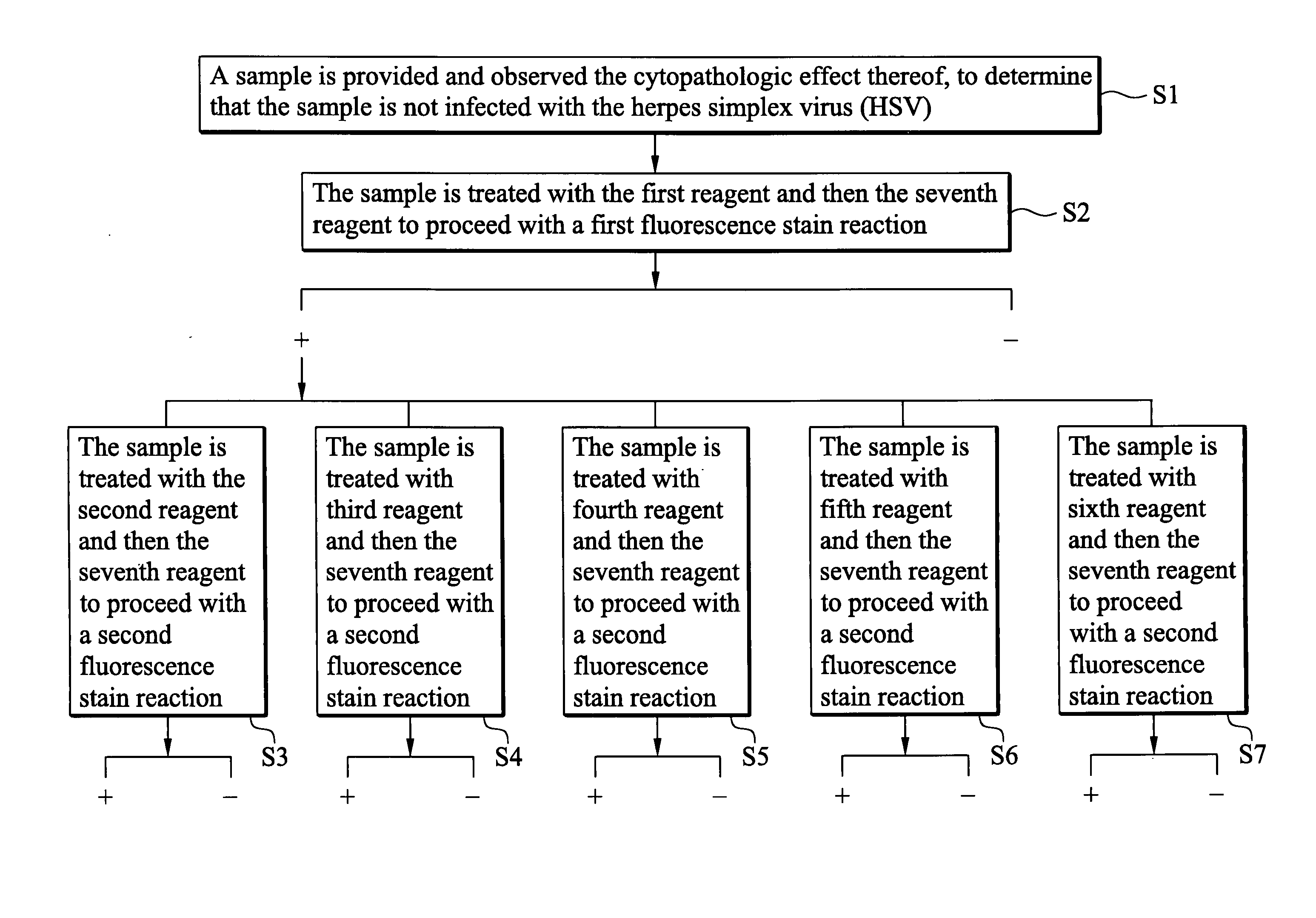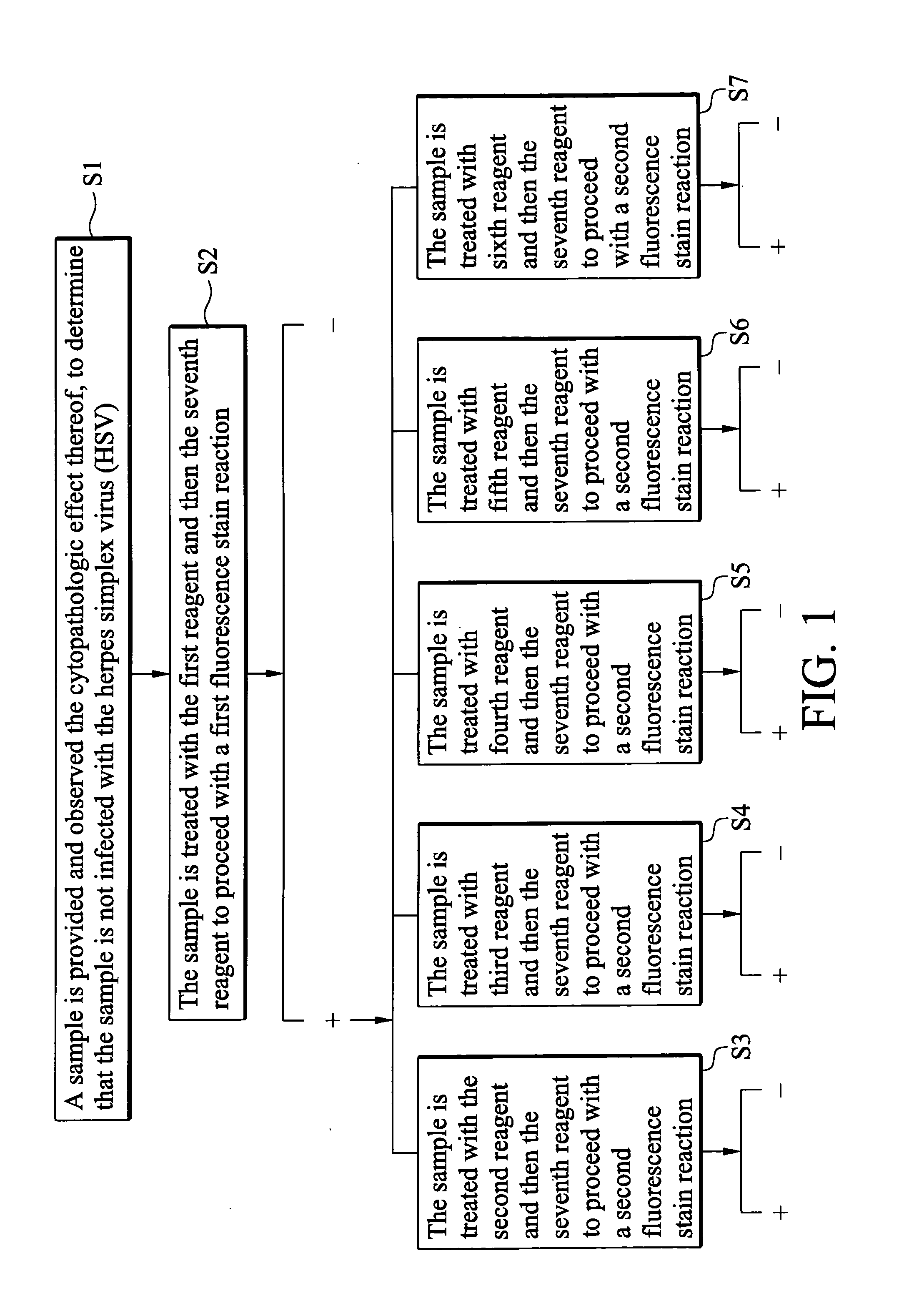Indirect immunofluorescence assay typing kit for coxsackievirus A group and method for typing coxsackievirus A group
a technology of immunofluorescence assay and kit, which is applied in the field of virus typing kit, can solve the problems of time-consuming and laborious neutralization test of enterovirus, and the inability to use molecular biological tests in many clinical laboratories,
- Summary
- Abstract
- Description
- Claims
- Application Information
AI Technical Summary
Benefits of technology
Problems solved by technology
Method used
Image
Examples
example
[0024]Preparation of the First to Seventh Reagents
[0025]Rabbits were used as a source to produce polyclonal antibodies. Coxsackieviruses A2, A4, A5, A6 and A10 identified by a neutralization test were chosen and proliferated, respectively. Then the viruses mentioned previously were treated with CHC13 and irradiation by UV light to inactivate. Four rabbits were grouped together and polyclonal antibody of each virus was prepared. The rabbits of every group were immunized with inactivated virus for 5 times, once every other day. Each dosage was 5 ml, and every ml contained 108 CCID or larger. On the forty second day, the rabbits of every group were given 10 ml of non-deactivized viruses. After one week, blood was collected from the rabbits of every group to obtain anti-coxsackieviruses A2, A4, A5, A6 and A10 polyclonal antibodies, respectively.
[0026]Next, a neutralization test to determine the homotiter and heterotiter for different enteroviruses was performed on each polyclonal antibo...
PUM
| Property | Measurement | Unit |
|---|---|---|
| fluorescence | aaaaa | aaaaa |
| fluorescence stain | aaaaa | aaaaa |
| concentration | aaaaa | aaaaa |
Abstract
Description
Claims
Application Information
 Login to View More
Login to View More - R&D
- Intellectual Property
- Life Sciences
- Materials
- Tech Scout
- Unparalleled Data Quality
- Higher Quality Content
- 60% Fewer Hallucinations
Browse by: Latest US Patents, China's latest patents, Technical Efficacy Thesaurus, Application Domain, Technology Topic, Popular Technical Reports.
© 2025 PatSnap. All rights reserved.Legal|Privacy policy|Modern Slavery Act Transparency Statement|Sitemap|About US| Contact US: help@patsnap.com


